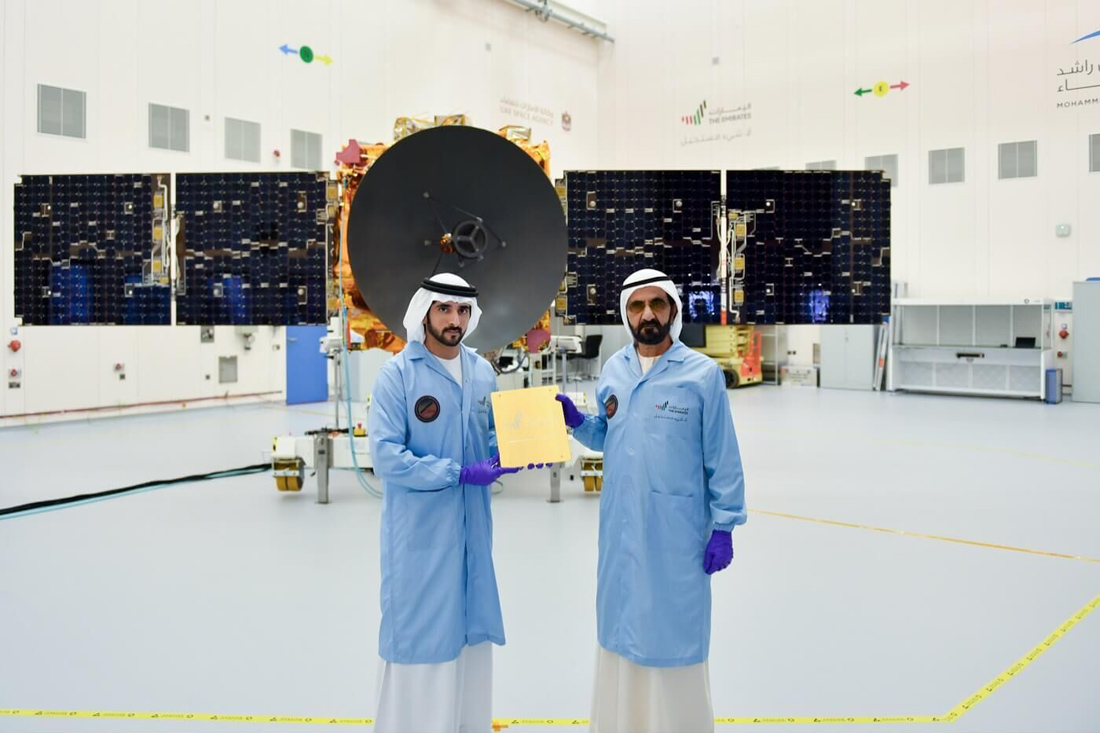
In 2020, three countries at once swung to achieve the Red Planet. Three rockets, seven spacecraft, many scientific instruments are sent to Mars to better understand its atmosphere, surface and bowels. Scientists want to better know what the neighboring planet was like in the past and understand what awaits it in the future.
With hope and a spectrometer
The first launch to Mars this July was made by a Japanese rocket. However, the spacecraft she sent belonged to the United Arab Emirates. It was produced in the United States with funds and with significant participation of UAE specialists. The device was named Al Amal - "Hope" or Hope in English.
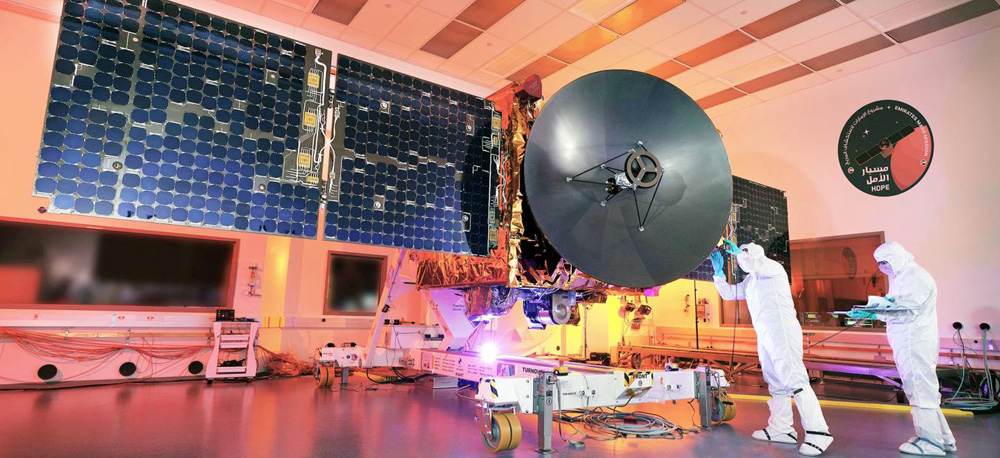
Al Amal is an orbiting automatic interplanetary station. It should reach Mars by February next year, when the UAE will celebrate the 50th anniversary of its independence. The Al Amal scientific program involves observing the atmosphere of the Red Planet from a highly elliptical orbit in order to survey not only the surface, but also the surrounding space. UAE scientists hope to understand with what intensity and for what reasons Mars is losing its gas shell, and to observe annual weather changes.
Al Amal is equipped with three scientific instruments, two of which are infrared and ultraviolet spectrometers. The third device is a camera, which should show us new panoramas of Mars from different heights from 20 thousand km to 43 thousand km. The camera is equipped with a set of color filters to not only see the planet in natural color, but also receive additional information in the ultraviolet and infrared ranges. Scientific instruments were developed in the United States and created taking into account current issues in the study of Mars, this distinguishes the Arab research program from, for example, the Indian Mars Orbiter Mission, where instruments are more of a test nature and do not reach the world level.

Given the close cooperation of the UAE with the United States, it is likely that Al Amal will also help in transferring data to Earth from American Mars rovers.
For the Emirates, the launch of the Martian program is not only a matter of prestige. Thus, the oil-rich country is trying to diversify the economy, develop its own space industry, which could compete in the world market. The UAE has already launched its cosmonaut with the help of Roscosmos, together with South Korea, they have developed four near-Earth satellites. The Space Center named after A. Mohammed bin Rashid, and a station for receiving and transmitting space data was built. Arab specialists are participating in the Russian-American Sirius ground isolation project to study the conditions of a man's flight to Mars.
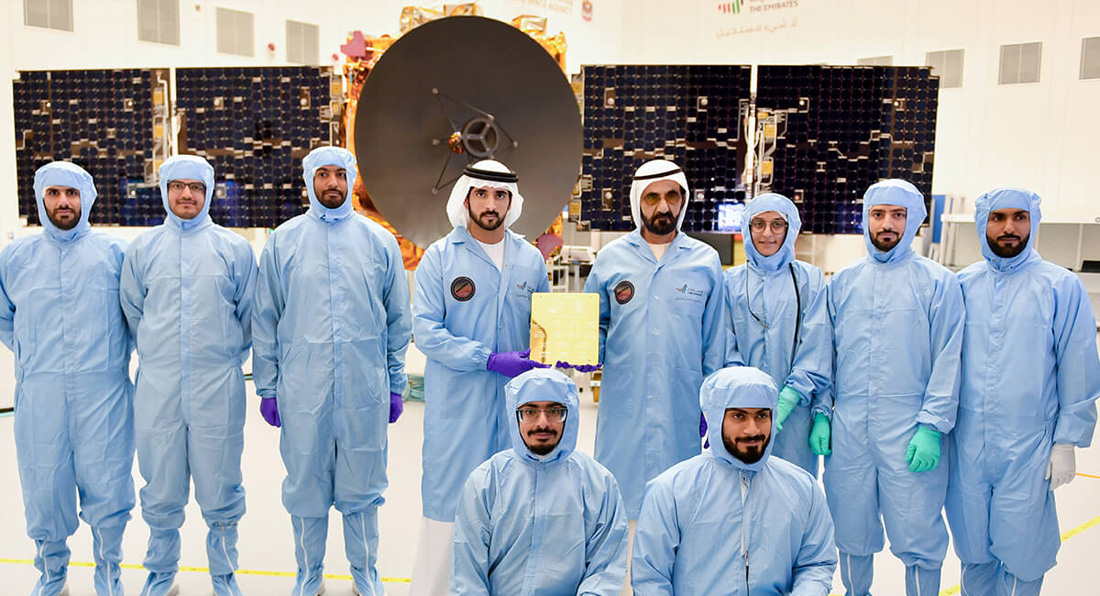
Mars serves as a bright reason for the Emirates to attract engineering personnel to the country's cosmonautics, motivates students to obtain scientific specialties, and all Arabs to scientific and technical activities. For the state, Mars is needed to emphasize the UAE's orientation towards scientific and technological development, and not just burning oil rent.
I asked the sky ...
The next one after the Japanese rocket to Mars was also launched by the Far East - from China. The Long March 5 heavy rocket belongs to a new generation of Chinese rockets, more environmentally friendly, powered by oxygen-kerosene and oxygen-hydrogen engines.
In fact, this is a Chinese "Angara", which is already actively flying. In the future, carriers of this series are expected to launch a spacecraft to the Moon for extraction of soil, and will launch a Chinese multi-module space station. China's new spaceships are also to be launched on Long March 5.
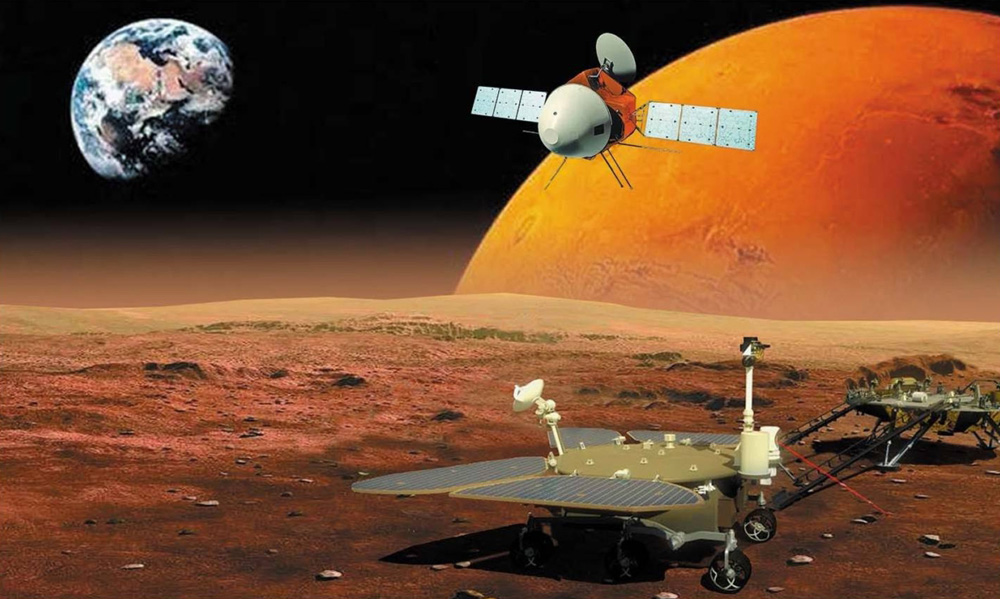
China launches a solar system study program with a Mars launch. Therefore, the name Tianwen-1 ("Questions to the Sky") suggests that the next spacecraft will fly to other planets.
Tianwen-1 is three spacecraft at the same time. Two of them - the orbiter and the rover - will carry out scientific tasks, while the landing platform will have only technical work - delivery of the rover to the surface of the Red Planet.
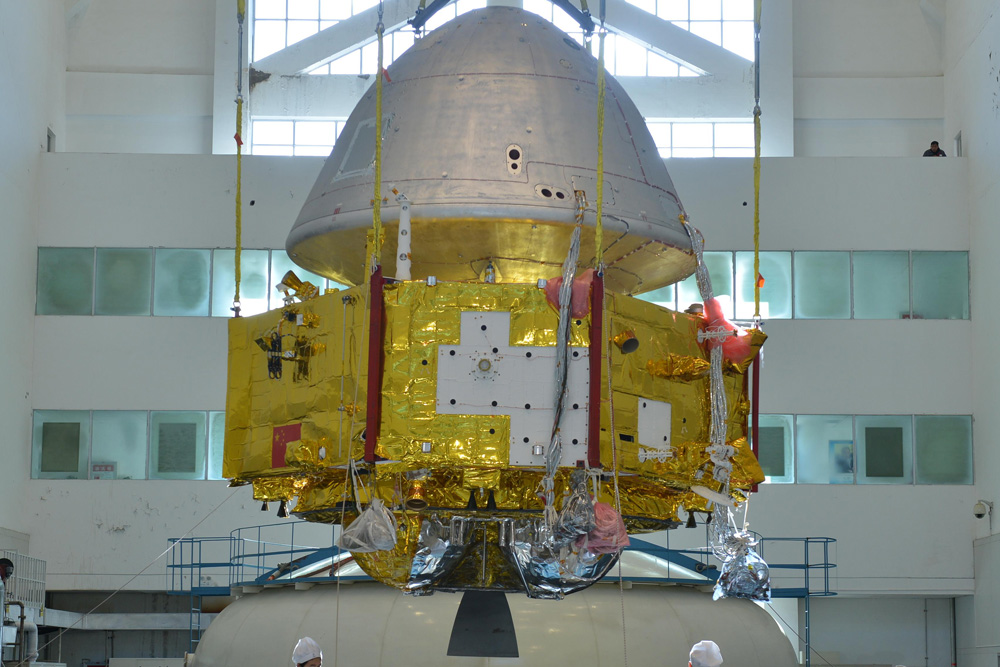
From orbit, China will study the atmosphere and surface of Mars. For this, the probe is equipped with cameras, spectrometers, a magnetometer, charged particle detectors, and a penetrating radar. The second, no less important role of the apparatus is relaying scientific data from the rover to Earth. The rover largely repeats the design of the Chinese Yutu lunar rovers, although it is twice as large. It is equipped with panoramic cameras and a laser spectrometer, similar to the one on the Curiosity rover, it also has a georadar, like its lunar counterparts.
Scientific instruments of both the orbiter and the rover largely repeat previous studies, therefore, they do not promise much novelty and sensational discoveries. From the point of view of science, Chinese research is interesting primarily by the georadar of the rover. This has never landed on Mars. The radar should "enlighten" the interior of the planet to a depth of 100 m. The proposed landing area - the Utopia Plain - is also curious. Its location and the nature of the surface suggests that it was once the bottom of the Martian ocean, and significant reserves of water ice may still remain in the ground.
The American Viking 2 has already landed in this area, but he did not get to the bottom of the water, and the Chinese rover will have no means at all for excavations, but the radar should show this interesting area at a depth. There can be found not only ice deposits, but also buried ancient craters and mud volcanoes. Perhaps these results should be expected the most of all three expeditions in 2020.

Landing of the rover will not happen immediately, at first the entire assembly of three vehicles will enter the near-Mars orbit, which will require a serious decrease in orbital speed, but will facilitate the descent of the rover. Landing is planned in 2-3 months after entering orbit.
Persistence Mars takes
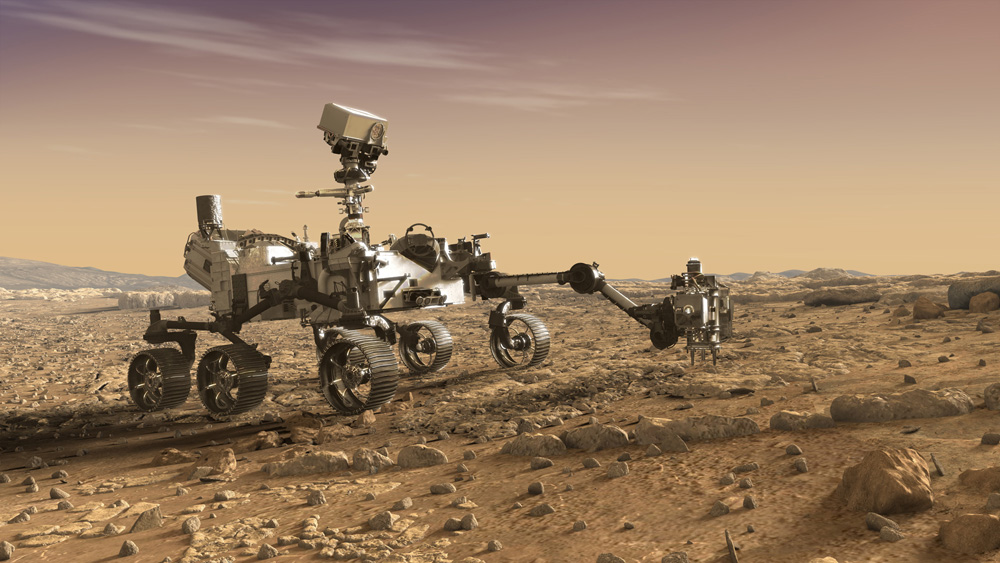
On July 30, 2020, the third, final, Martian launch of this summer is expected - the American one. NASA is sending one Mars exploration rover carrying a small helicopter drone. A soft landing for this pair will be provided by the SkyCrane soft landing system, which performed well in 2012 with the delivery of the Curiosity rover.
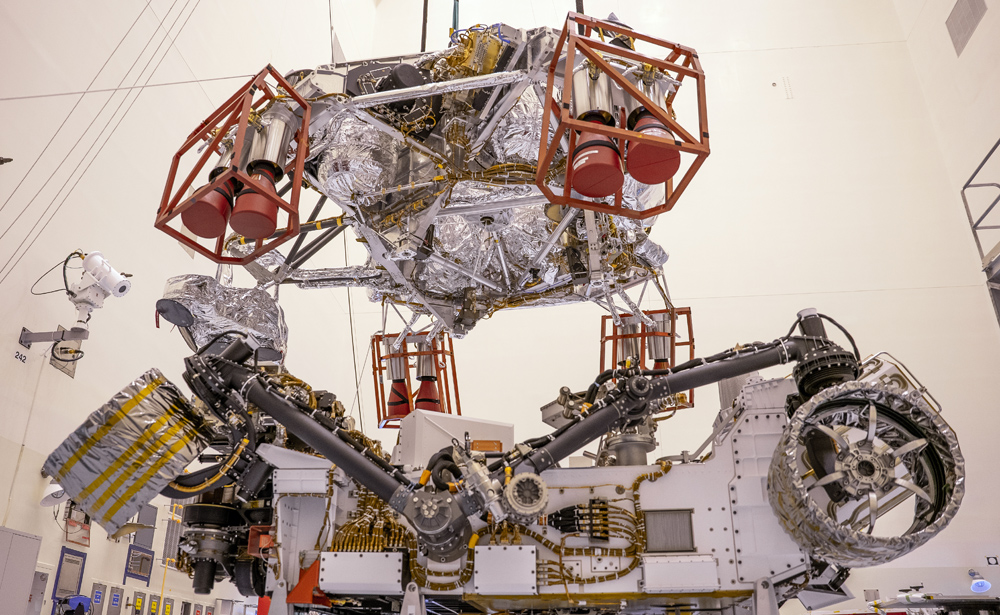
The new Mars conqueror was named Perseverance in a worldwide vote. It will be the heaviest and most sophisticated spacecraft ever to explore the Red Planet - over one ton. At the same time, the mass of scientific equipment is less than that of Curiosity.... This difference is due to the fact that Curiosity is a laboratory that must analyze soil and atmosphere on site, i.e. on Mars. The main task of Petseverance is to collect samples for delivery to Earth, and equipment for "collecting" takes up significant space and adds mass.
The Martian helicopter Ingenuity is designed according to a coaxial scheme and is equipped only with a camera, communication with the Earth will be through the rover. The task of the drone is only in testing the technology of autonomous flight on another planet. Although Mars has a very rarefied atmosphere, the force of gravity is lower than on Earth and tests in a vacuum chamber have shown the possibility of Ingenuity's flight.
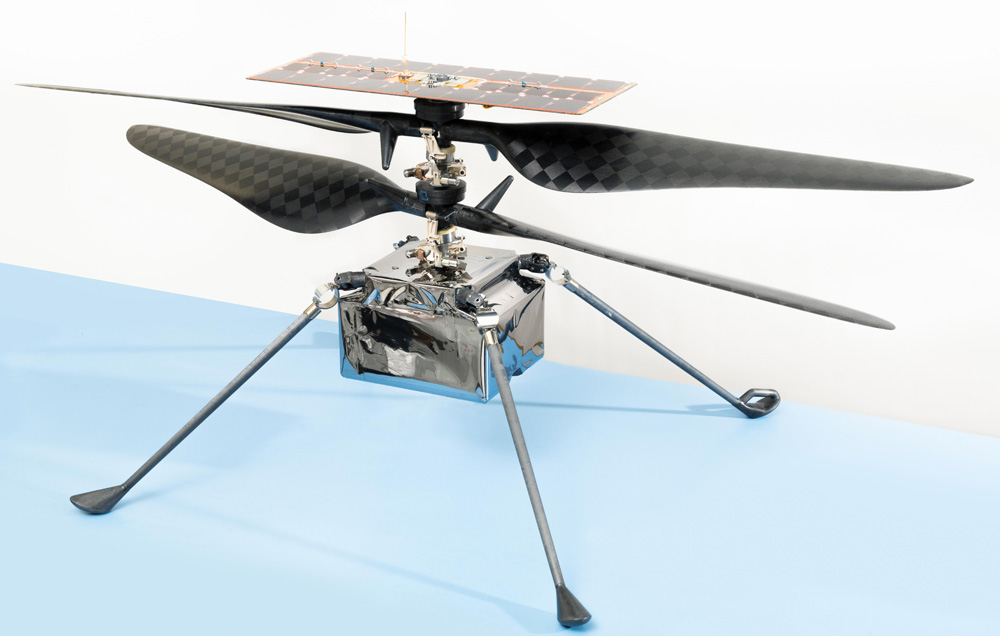
With the exception of sample collection, Perseverance is "Curiosity at maximum speed", it has stronger wheels, one and a half times more cameras, all of them are now color, the laser spectrometer for remote soil analysis is even more accurate. The depth of sampling from the rovers is the same: about 5 cm. The only difference is that Curiosity collects the regolith crushed by a drill, while Perseverance extracts core, i.e. an unbroken rock cylinder, which is sent to "packaging" for delivery.
Perseverance will also have a penetrating radar, like the Chinese rover, but its "range" is only 10 meters, and the landing site is not so interesting for studying the bowels. But for geologists and astrobiologists, the most promising place was chosen - an ancient river delta in a crater with the Serbian name of Jezero. Apparently, there really was a lake, and if it was inhabited, signs of life should be found in collected samples in terrestrial laboratories.
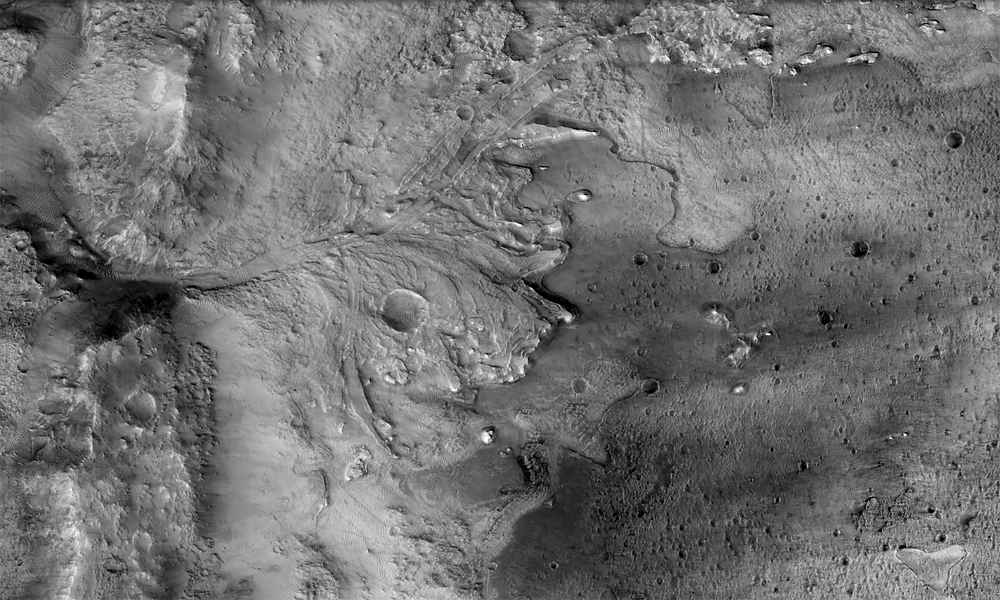
Delivery of the Martian samples to Earth will happen sometime later. This will be the most complex automatic operation in space, where, in addition to Perseverance, a launch rocket, a rover-transport rover and an orbiter will be involved. NASA is planning a program with the European Space Agency over the next ten years.
It is impossible not to mention the "Russian trace" in this project of studying Mars: Perseverance is launched on the Atlas V rocket, the first stage of which is equipped with the RD-180 engine of the Russian Energomash . In the Curiosity project, the importance of Russia was higher: there, in addition to the rocket engine, there was a DAN device for searching for water in the ground, and a radioisotope thermoelectric generator was fueled with plutonium-238 from Rosatom.

Perseverance is scheduled to start at 2:50 pm today. The broadcast with Russian-language comments can be viewed here, beginning at 14:00 Moscow time: